Congratulations to the winners of our 2023 Lincoln Essay & Drawing Contest!
Essay Winners
1st Place: Ben N.—8th Grade—Pierce Middle School
2nd Place: Nathan L.—8th Grade—Pierce Middle School
Art Winners
1st Place: Maddie O.—5th Grade—Glover School
2nd Place: Eliana L.—5th Grade—The Rashi School
3rd Place: Alex F.—5th Grade—Glover School
3rd Place: Eleanor O.—5th Grade—Glover School
Honorable Mention: Haley S.—5th Grade—Glover School
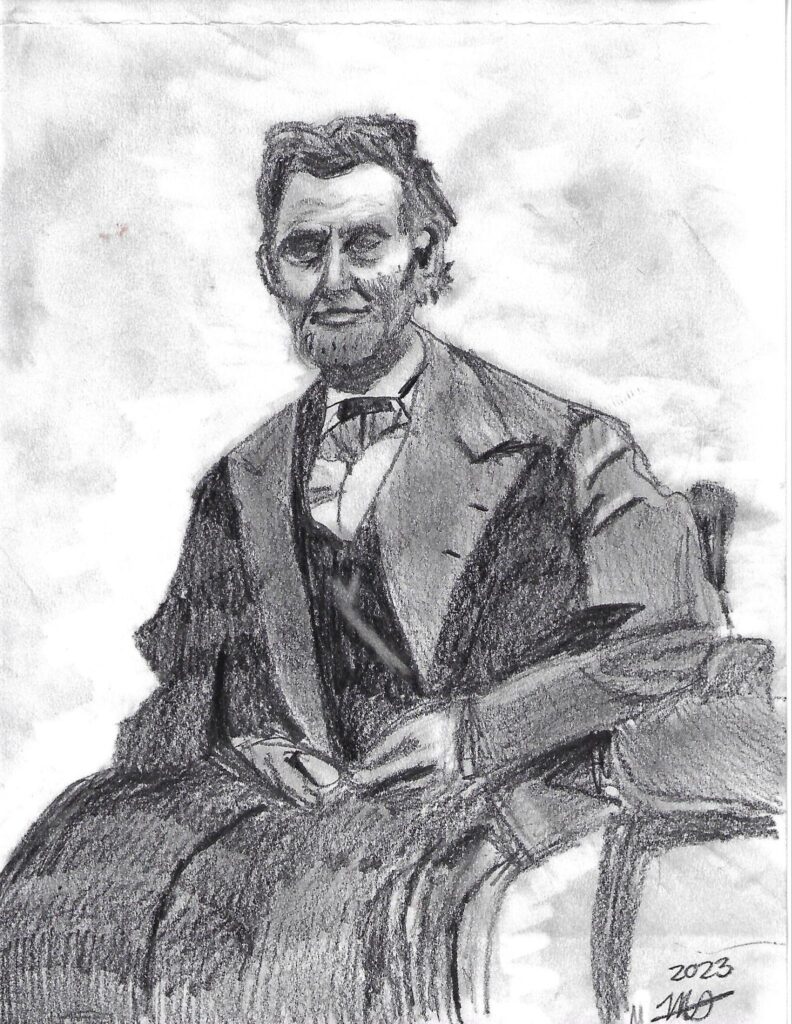
Winning artwork is currently on view with the temporary exhibit “Frederick Douglass: Advocate for Equality.”
“A Picture is Worth a Thousand Words.”
The Forbes House Museum’s Mary Bowditch Forbes collection contains hundreds of photographs.
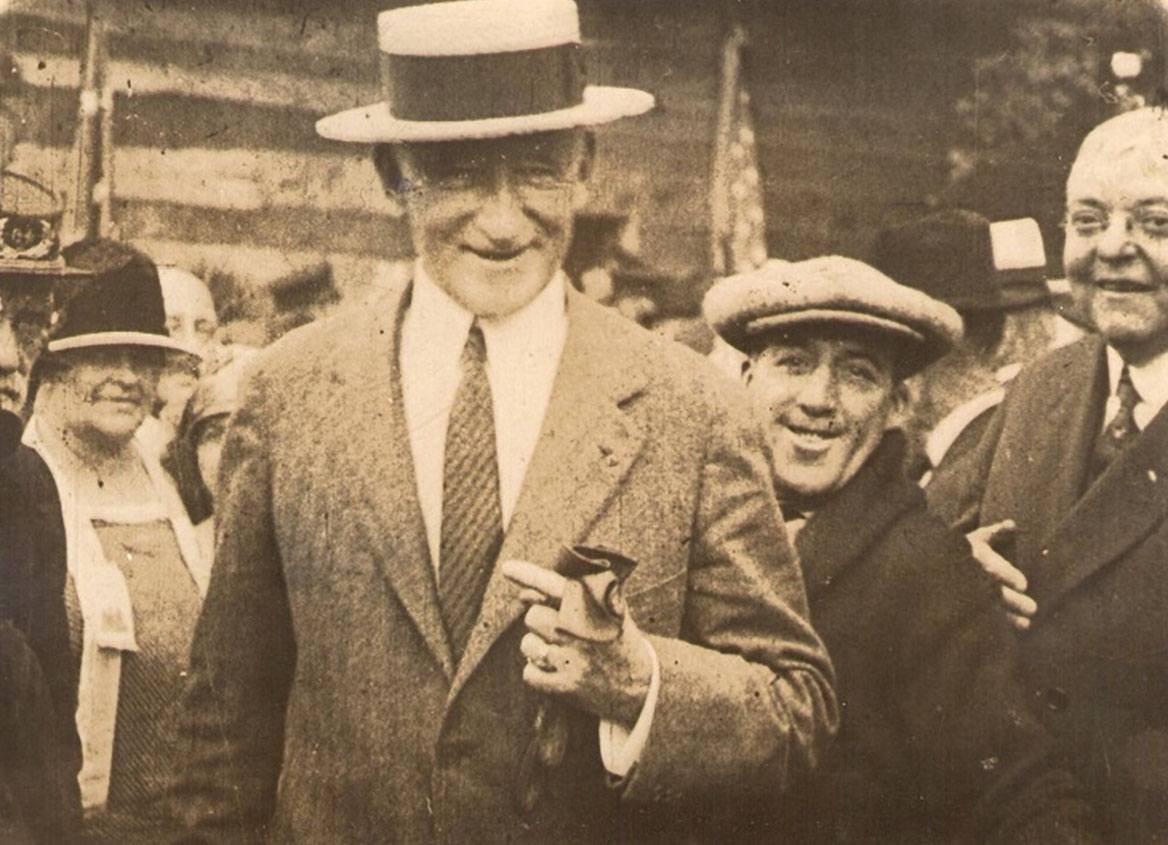
Visitors to the Lincoln Cabin, August 14, 1924
Many members of the Grand Army of the Republic, or G.A.R., visited Mary’s cabin while in Boston for their 58th National Encampment. The man on the far left wears a G.A.R. hat. The G.A.R. was a patriotic group of Civil War veterans who had served in the Union forces.
Photography was introduced to the world in 1839. It was still a relatively new medium during Abraham Lincoln’s presidency and the American Civil War and then, as now, it played an important role in shaping opinions about the events, issues and public figures of the time.
Photography was introduced to the world in 1839. It was still a relatively new medium during Abraham Lincoln’s presidency and the American Civil War and then, as now, it played an important role in shaping opinions about the events, issues and public figures of the time.
Essay Prompt
Research and consider the role of photography during this period in our history, with a specific focus on one of the following subjects:
- Battlefields and Civil War Encampments
- President Lincoln
- Abolition
Here are some questions to think about:
- What sorts of images were used or not used?
- Why were particular images chosen?
- What considerations went into setting up the photographs or selecting certain poses?
- What purpose were the photographs meant to serve?
- Why were the photographs effective?
Finally, choose a photograph of a current or recent event and explain why you feel it’s particularly effective.
Art Prompt
First, review the selection of photographs below from “The Civil War Through the Camera, Elson’s New History in Sixteen Parts,” a series of books dating to 1912 in the museum’s Mary Bowditch Forbes collection of LIncolniana. Identifying text accompanies each photograph.
Next, select one of the photographs to recreate using any medium of your choice. You may choose to work in color or black & white. Your version may be realistic or abstract. Judges will be looking for your unique voice as inspired the photograph of your choosing, rather than an effort to duplicate the image exactly.
Finally, in your artist’s statement, explain your choices and the choices you imagine the photographer had to make. Describe how your experience as an artist is different than the photographer’s experience would have been.
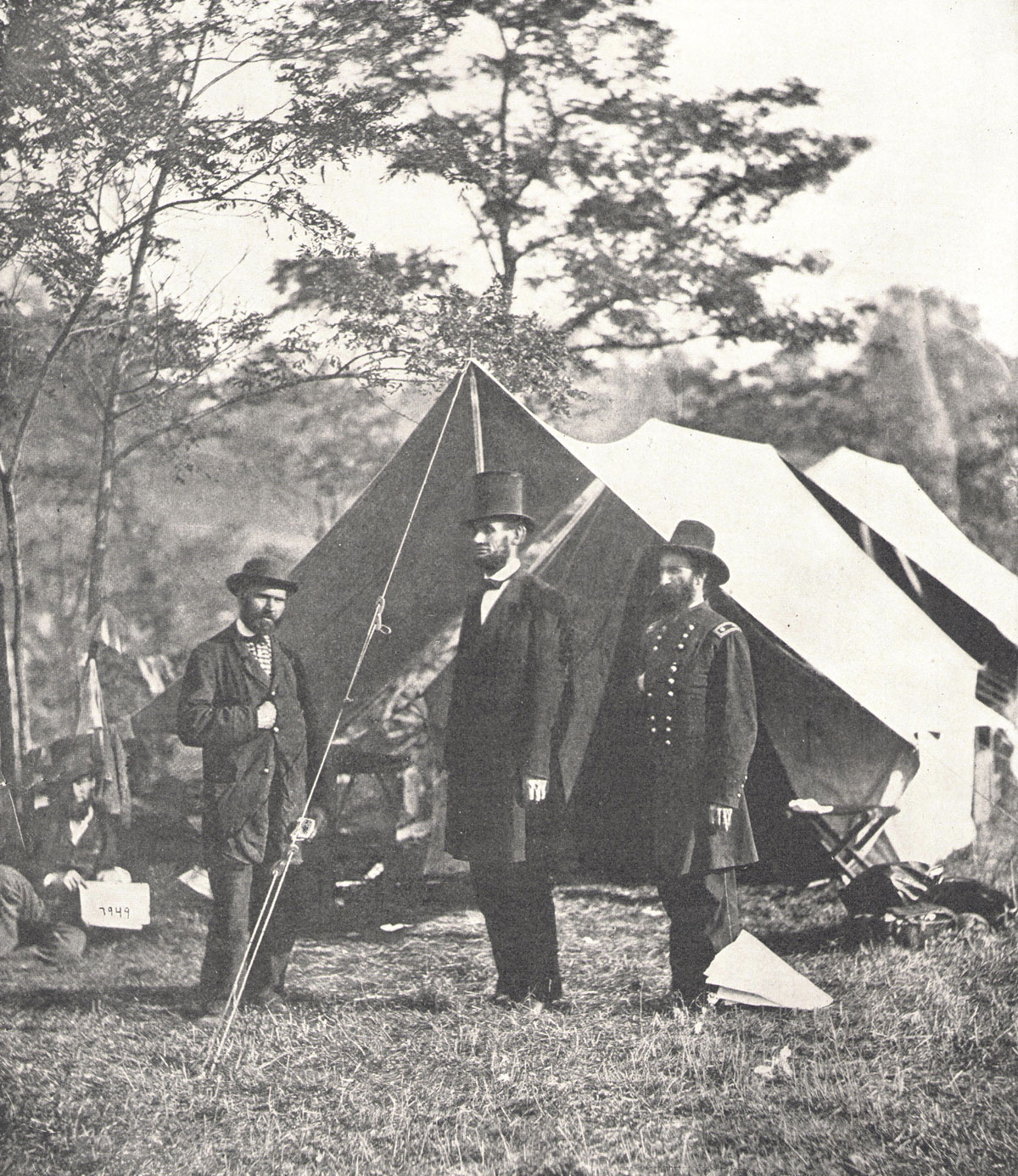
The Mediator
President Lincoln’s Visit to the Camps at Antietam*, October 8, 1862. Yearning for the speedy termination of the war, Lincoln came to view the Army of the Potomac, as he had done at Harrison’s Landing. Puzzled to understand how [General Robert E.] Lee could have circumvented a superior force on the Peninsula, he was now anxious to learn why a crushing blow had not been struck. Lincoln (after Gettysburg) expressed the same thought: “Our army held the war in the hollow of their hand and they would not close it!” On Lincoln’s right stands Allan Pinkerton, the famous detective and organizer of the Secret Service of the army. At the President’s left is General John A. McClernand, soon to be entrusted by Lincoln with reorganizing military operations in the West.
*”For fourteen long hours more than one hundred thousand men, with five hundred pieces of artillery, had engaged in titanic combat… Although tactically it was a drawn battle, Antietam was decisively in favor of the North inasmuch as it ended the first Confederate attempt at a Northern invasion.”
“The Civil War Through the Camera”
Part Six
Copyright 1912
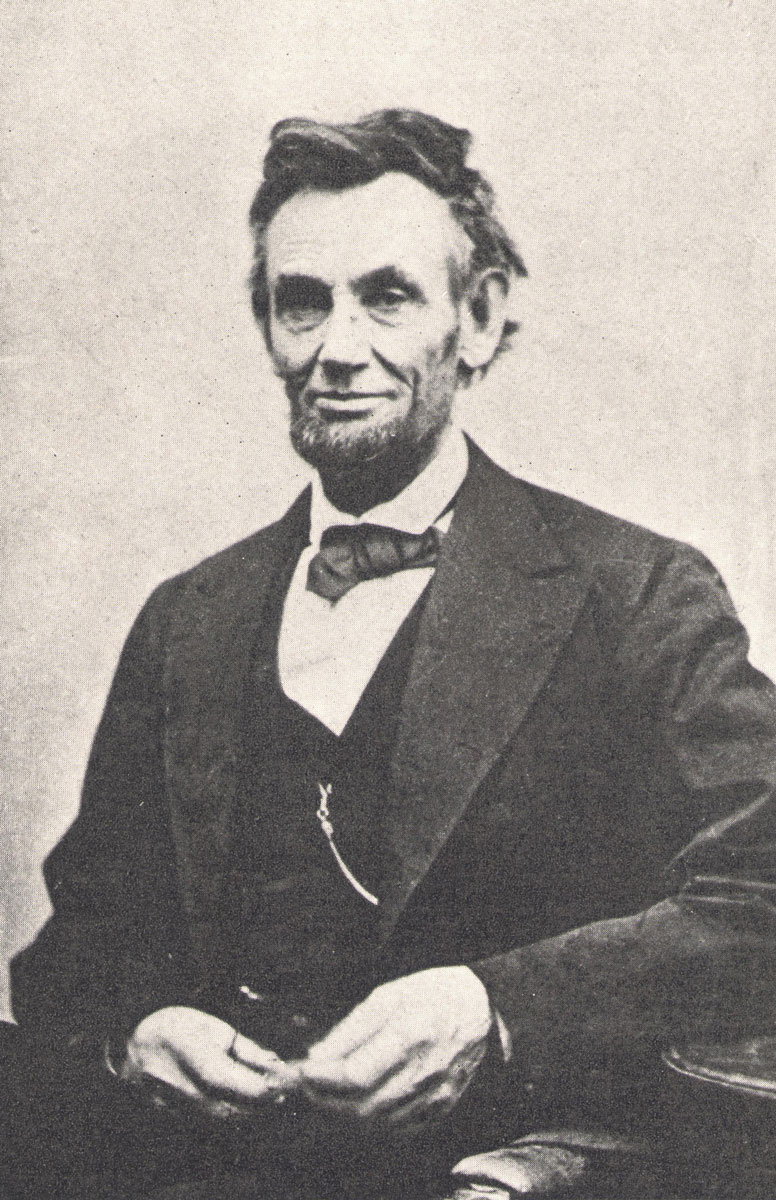
LINCOLN
The Last Sitting – On the day of Lee’s Surrender
On April 9, 1865, the very day of the surrender of Lee at Appomattox, Lincoln, for the last time, went to the photographer’s gallery. As he sits in simple fashion sharpening his pencil, the man of sorrow cannot forget the sense of weariness and pain that for four years has been unbroken. No elation of triumph lights the features. One task is ended – the Nation is saved. But another, scarcely less exacting, confronts him. The States which lay “our of their proper practical relation to the Union,” in his own phrase, must be brought back into a proper practical relation. But this task was not for him. Only five days later the sad eyes reflected upon this page closed forever upon scenes of earthly turmoil. Bereft of Lincoln’s heart and head, leader attacked problems of reconstruction in ways that proved unwise. As the mists of passion and prejudice cleared away, both North and South came to feel that this patient, wise, and sympathetic ruler was one of the few really great men in history, and that he would live forever in the hearts of men made better by his presence during those four years of storm.
“The Civil War Through the Camera”
Hundreds of Vivid Photographs Actually Taken in Civil War Times
Part Sixteen
Copyright 1912
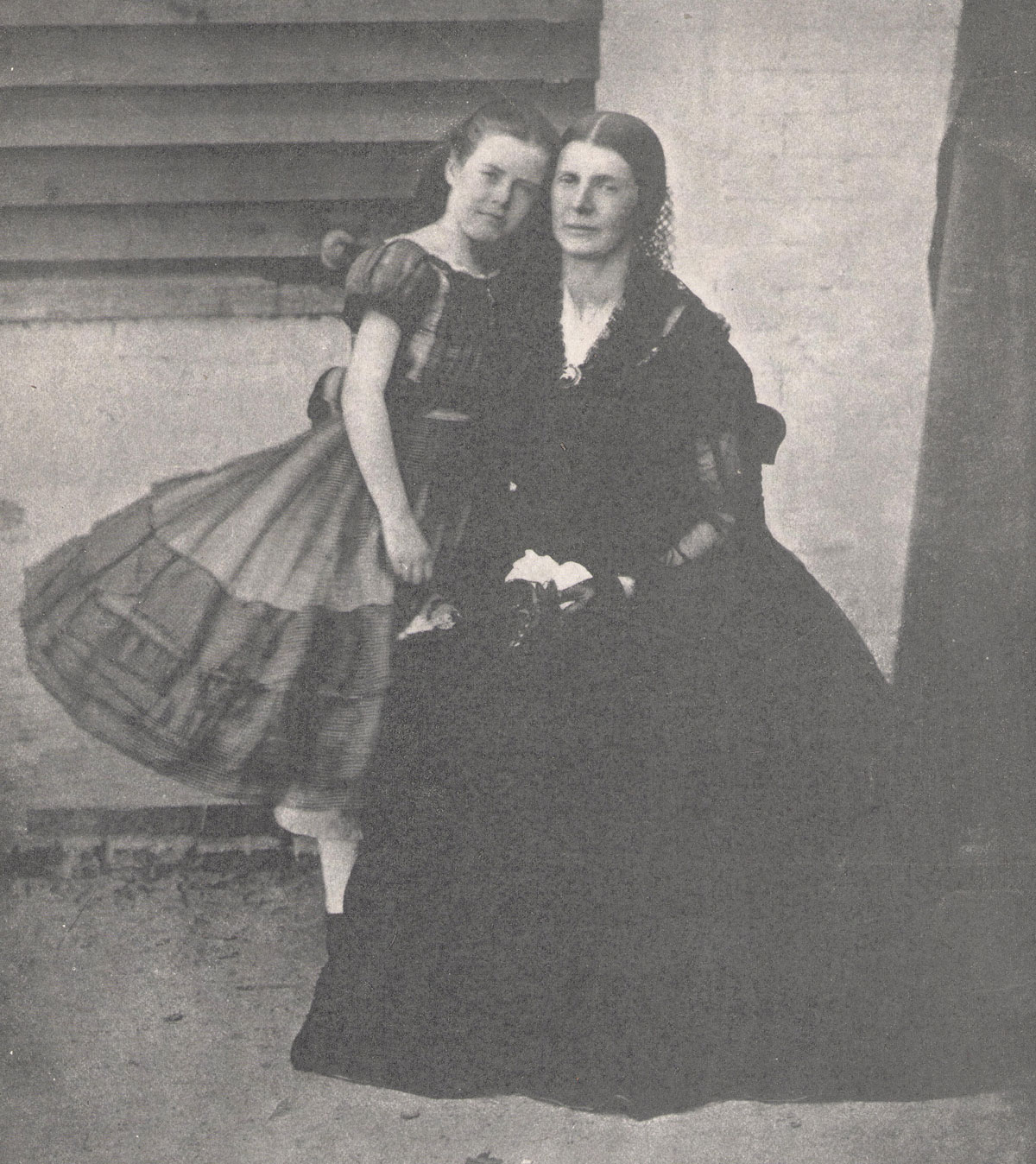
Mrs. Greenhow, The Confederate Spy, with her daughter, in the Old Capitol Prison
Mrs. Rose O’Neal Greenhow, a zealous and trusted friend of the Confederacy, lived in Washington at the opening of the war. It was she who, on July 16, 1861, sent the famous cipher message to [Brigadier-General] Beauregard, “Order issued for McDowell to move on Manassas to-night.” Acting on this, Beauregard promptly arranged his army for the expected attack, while [Joseph E.] Johnston and “Stonewall” Jackson hastened from the Valley to aid in repelling the Federal advance. Mrs. Greenhow’s secret-service work was cut short on August 26th, when Allan Pinkerton, the Federal detective, arrested her and put her under military guard at her home, 398 Sixteenth Street. Afterward, she was transferred to the Old Capitol Prison. She remained there until April, 1862. On June 2d, after pledging her word not to come north of the Potomac until the war was over, Mrs. Greenhow was escorted beyond the lines of the Union army and set at liberty. It was later discovered that she had, even while in prison, corresponded extensively with Colonel Thomas Jordan, of General Beauregard’s staff.
“The Civil War Through the Camera”
Part One
Copyright 1912
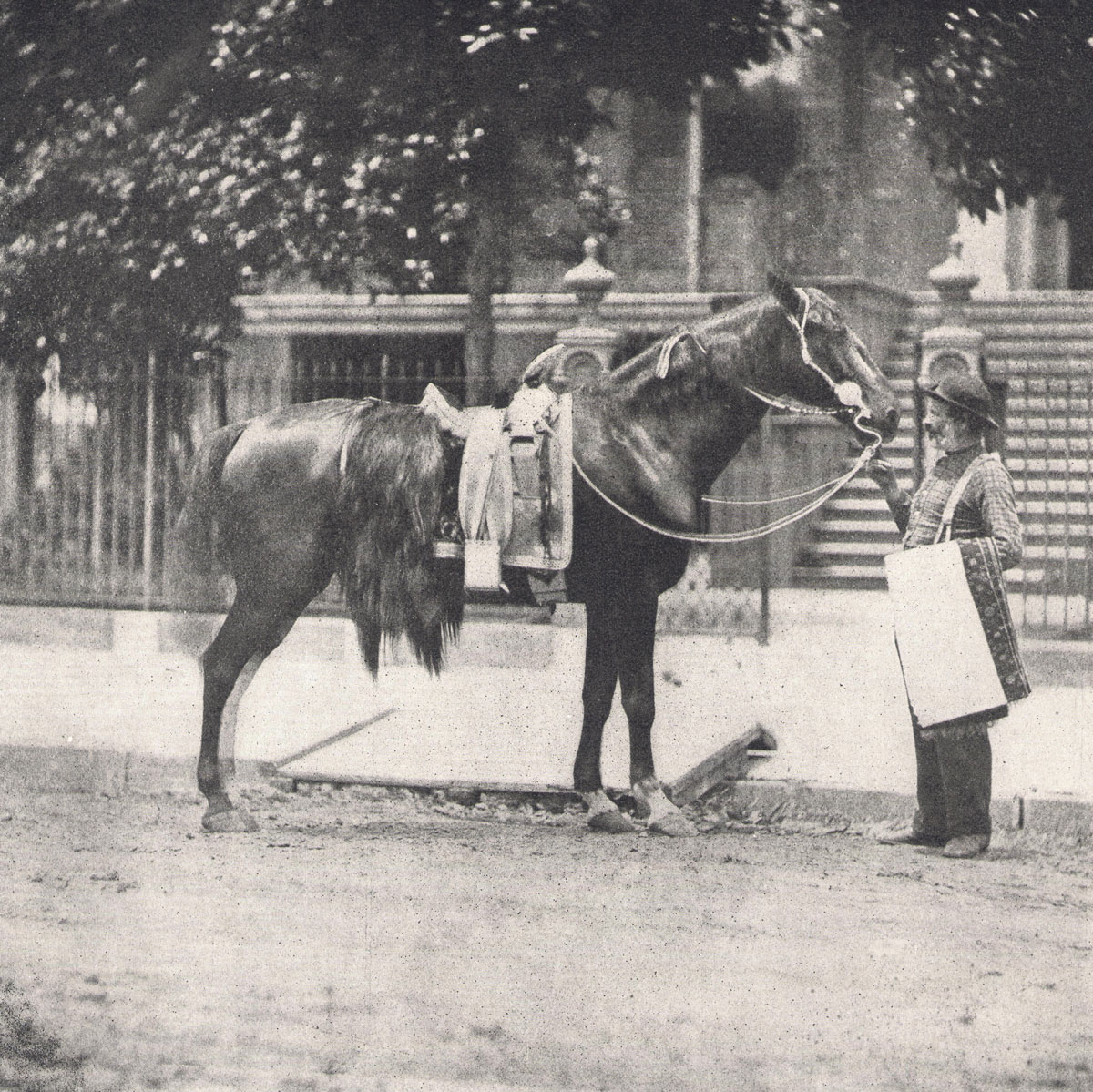
General Sheridan’s “Winchester”
“Winchester” wore no such gaudy trappings when he sprang “up from the South, at break of day” on that famous ride of October 19, 1864, which has been immortalized in Thomas Buchanan Read’s poem*. The silver-mounted saddle was presented later by admiring friends of his owner. The sleek neck then was dark with sweat, and the quivering nostrils were flecked with foam at the end of the twenty-mile dash that brought hope and courage to an army and turned defeat into the overwhelming victory of Cedar Creek. [General Philip H.] Sheridan himself was as careful of his appearance as [General George] Custer was irregular in his field dress. He was always careful of his horse, but in the field decked him in nothing more elaborate than a plain McClellan saddle and army blanket.
“The Civil War Through the Camera”
Part Fourteen
Copyright 1912
An excerpt from that poem:
Hurrah! hurrah for Sheridan!
Hurrah! hurrah for horse and man!
And when their statues are placed on high,
Under the dome of the Union sky,
The American soldier’s Temple of Fame;
There with the glorious general’s name,
Be it said, in letters both bold and bright,
“Here is the steed that saved the day,
By carrying Sheridan into the fight,
From Winchester, twenty miles away!”
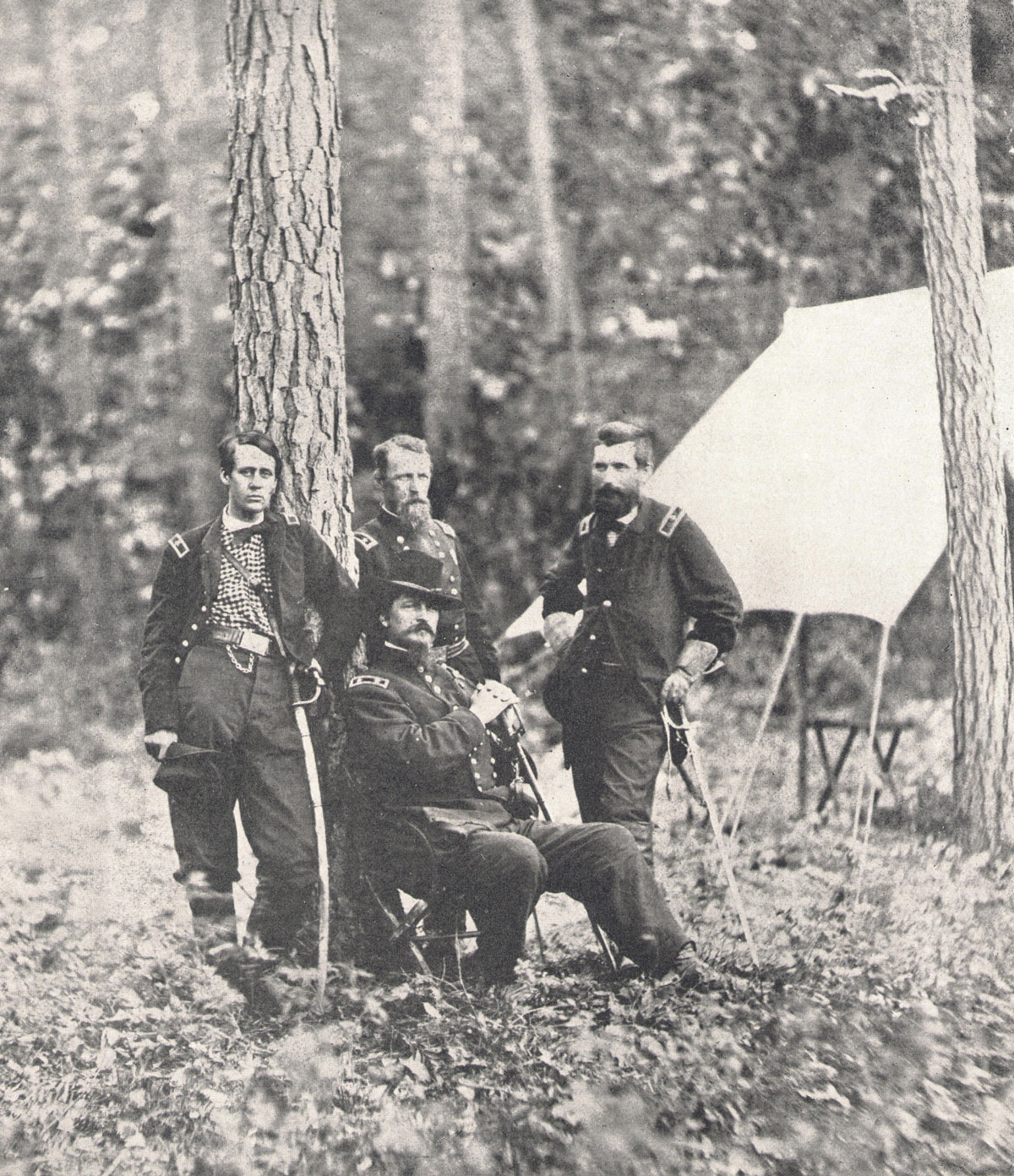
Hancock, “The Superb”
Every man in this picture was wounded at Gettysburg. Seated, is Winfield Scott Hancock; the boy-general, Francis C. Barlow (who was struck almost mortally), leans against the tree. The other two are General John Gibbon and General David B. Birney. About four o’clock in the afternoon of July 1st a foam-flecked charger dashed up Cemetery Hill bearing General Hancock. He had galloped thirteen miles to take command. Apprised of the loss of Reynolds*, his main dependence, [General Gordon] Meade knew that only a man of vigor and judgment could save the situation. He chose wisely, for Hancock was one of the best all-around soldiers that the Army of the Potomac had developed. It was he who re-formed the shattered corps and chose the position to be held for the decisive struggle.
*General John F. Reynolds was shot and killed on Seminary Ridge, not far from Gettysburg, on the morning of July 1.
“The Civil War Through the Camera”
Part Nine
Copyright 1912
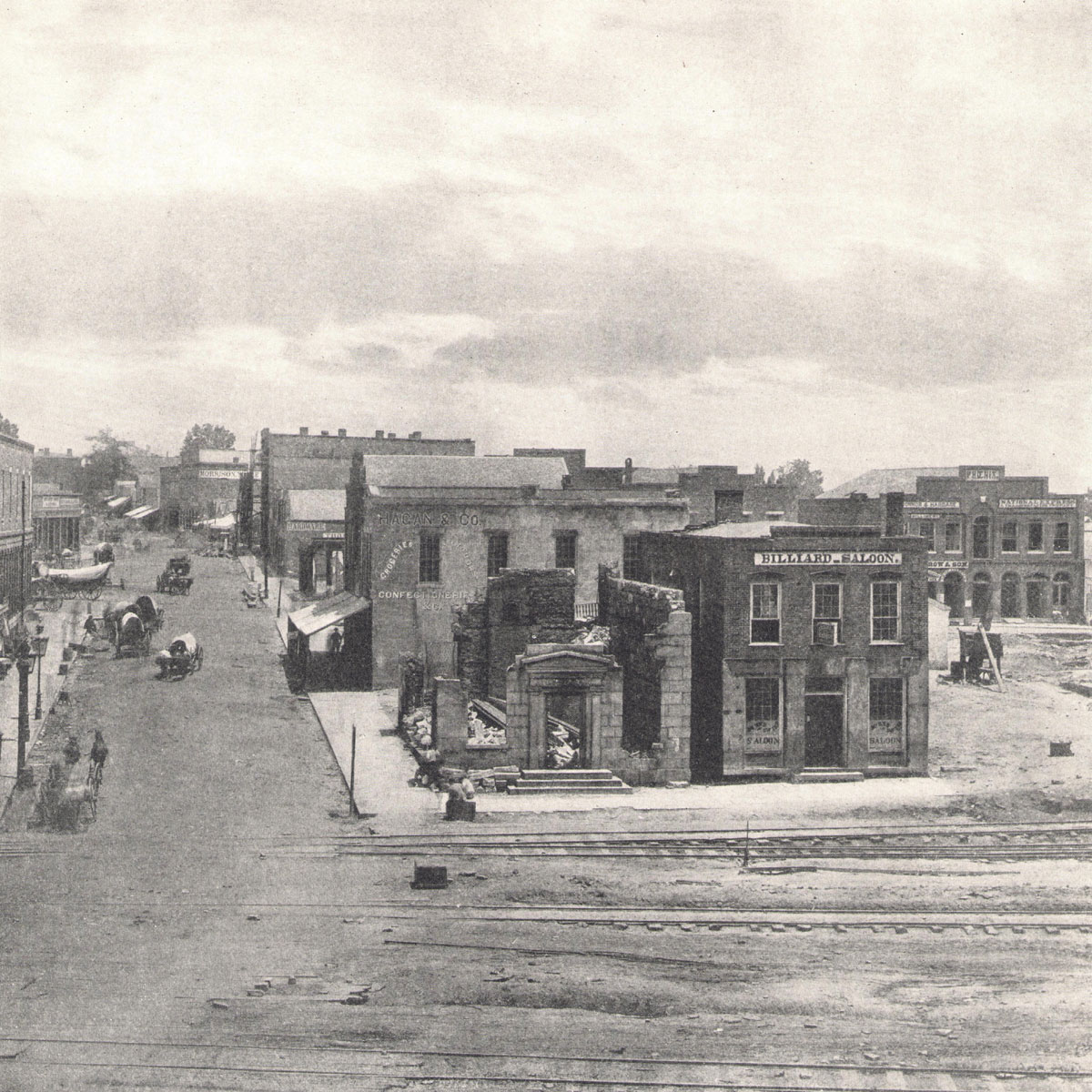
The Atlanta Bank Before the March to the Sea
As this photograph was taken, the wagons stood in the street of Atlanta ready to accompany the Federals in their impending march to the sea. The most interesting thing is the bank building in the corner, completely destroyed, although around it stand the stores of merchants entirely untouched. Evidently there had been here faithful execution of [General] Sherman’s orders to his engineers – to destroy all buildings and property of a public nature, such as factories, foundries, railroad stations, and the like; but to protect as far as possible strictly private dwellings and enterprises. Those of a latter generation who witnessed the growth of Atlanta within less than half a century after this photograph was taken, and saw tall office-buildings and streets humming with industry around the location in this photograph, will find in it an added fascination.
“The Civil War Through the Camera”
Part Fifteen
Copyright 1912